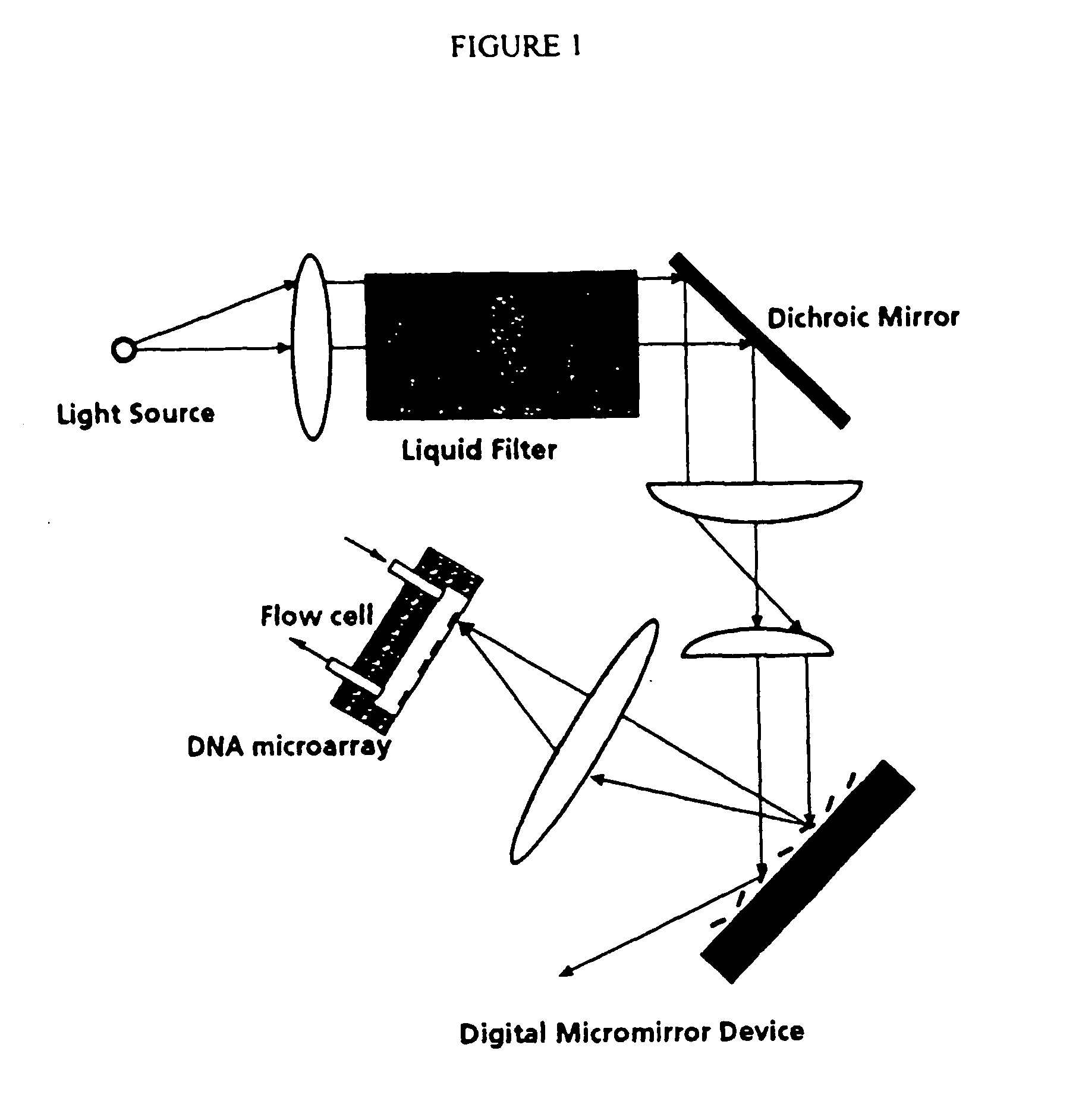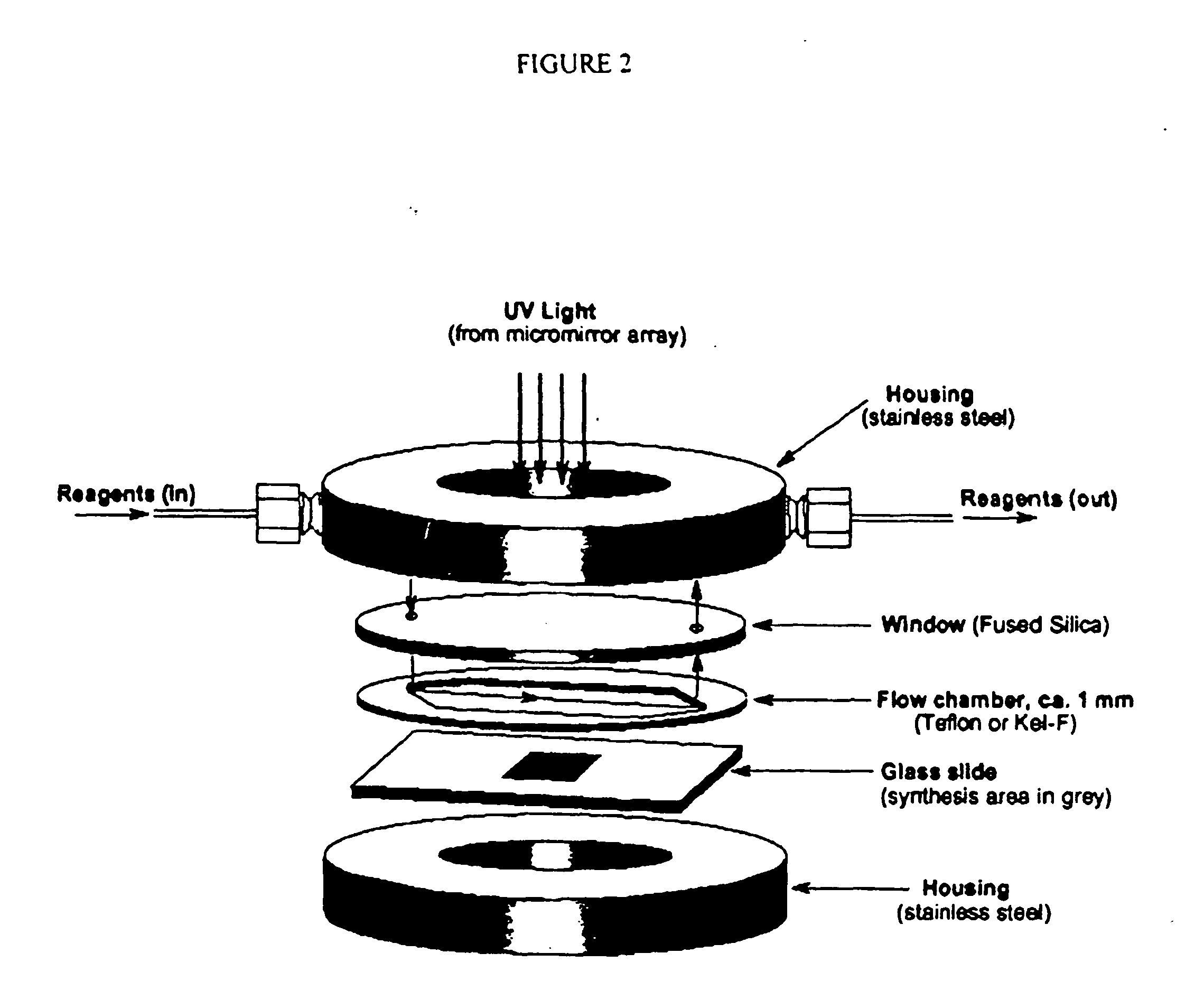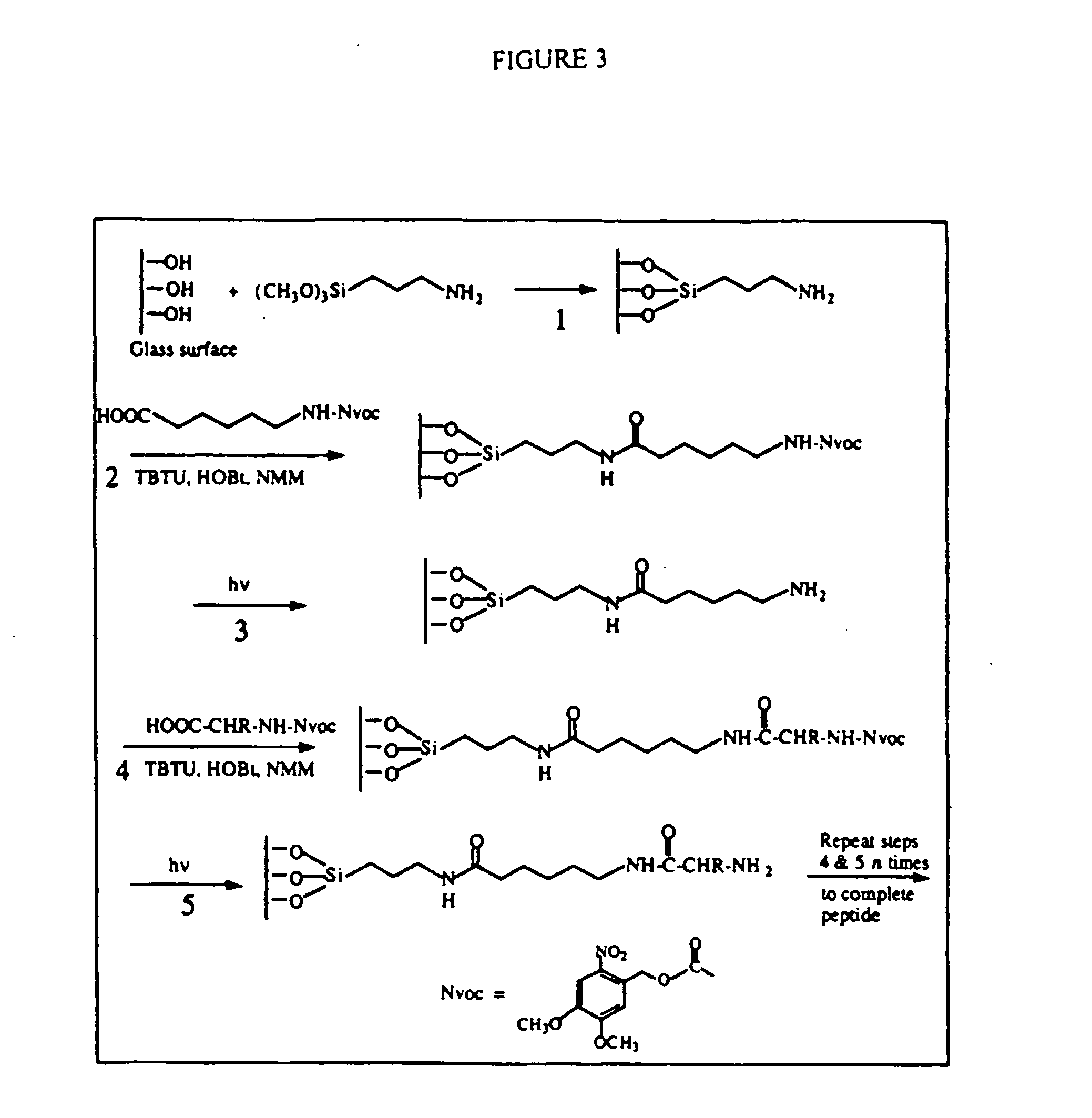Apparatus, composition and method for proteome profiling
a proteome and composition technology, applied in the field of apparatus, composition and method for proteome profiling, can solve the problems of slow application of methods to large numbers of spots (100 or more), limitations in the dynamic range of abundance and mass, and inability to detect large-scale spots
- Summary
- Abstract
- Description
- Claims
- Application Information
AI Technical Summary
Benefits of technology
Problems solved by technology
Method used
Image
Examples
example 1
[0102] For a square chip with s pixels in each direction, the pixel dimension is d, and the center-to-center distance between pixels is, the characteristic dimension of a phage head is w and w 10−5 cm. On average, each head would have two P3 proteins and therefore display two antibodies. The area of a chip with N2 pixels is
A=[(s−1)l+d]2.
[0103] When s=100, l=d, d=0.01 cm, and an average of 10,000 peptides / cm (1 million peptides per 0.01 cm2 pixel), the mean spacing between peptides is 10−4 cm. Under these conditions adjacent peptides do not interact physically because even a fully extended peptide with 20 residues would only span 6×10−7 cm. Additionally, because the spacing between peptides is greater than the dimension of the phage head, it is unlikely that more than one antibody will be bound to the same phage, therefore, phage binding would be monovalent. Because affinities of an antibody for a peptide are usually low, multivalent attachment would be desirable. A density of 1010...
example 2
[0106] Let T be the size of the antibody display library, i.e. the number of distinct antibody binding sites (typically billions). It is generally expected that more than one of the T distinct antibodies will recognize a particular peptide sequence. Consider a typical peptide sequence at concentration L. Let cj be the total concentration of phage available to bind it with affinity Kj; let bj be the concentration of these antibodies that are bound. Then, bj=KjcjL1+KjL[0107] and define CT as the total phage concentration: ∑ bj=∑KjcjL1+KjLL∑[Kjcj-Kj2cj+Kj3L2-…]=CT[<K>L-<K2>L2+<K3>L3-…]
[0108] Let the solution layered on the slide contain on average n copies of each of the T phages; i.e. the total number of phage is nT, and these are distributed throughout a volume v=[(s−1)l+d]2h, where h is the height of fluid on the slide. Then CT=nT / v. In addition, if is the density of peptides, then L=σ / h. To a first approximation, with l=d, the ratio of the concentr...
PUM
 Login to View More
Login to View More Abstract
Description
Claims
Application Information
 Login to View More
Login to View More - R&D
- Intellectual Property
- Life Sciences
- Materials
- Tech Scout
- Unparalleled Data Quality
- Higher Quality Content
- 60% Fewer Hallucinations
Browse by: Latest US Patents, China's latest patents, Technical Efficacy Thesaurus, Application Domain, Technology Topic, Popular Technical Reports.
© 2025 PatSnap. All rights reserved.Legal|Privacy policy|Modern Slavery Act Transparency Statement|Sitemap|About US| Contact US: help@patsnap.com



